Did you know that there are way more species of spiders than just the large, creepy kinds? In fact, it’s estimated that there are around 45,000 species of spiders in the world!
While they can range drastically in size and coloration, the smallest spider species can be hard to find, or even see up close.
So, in this article, we will explore 17 different types of small spiders, and also discuss some of the characteristics to help you identify them.
17 Small Spider Species
1. Patu Digua
So, the first spider on this list is “The Patu Digua spider” from the genus Patu. This spider was first discovered in Colombia and is considered the smallest spider in the world.
Patu digua males only reach 0.37 mm (0.015 in) in body size, which is roughly one-fifth the size of a pinhead.
The Patu Digua spider can be extremely difficult to observe, because of their size. In fact, according to the Guinness Book of World Records, these spiders are so small, that it can be extremely difficult to photograph.
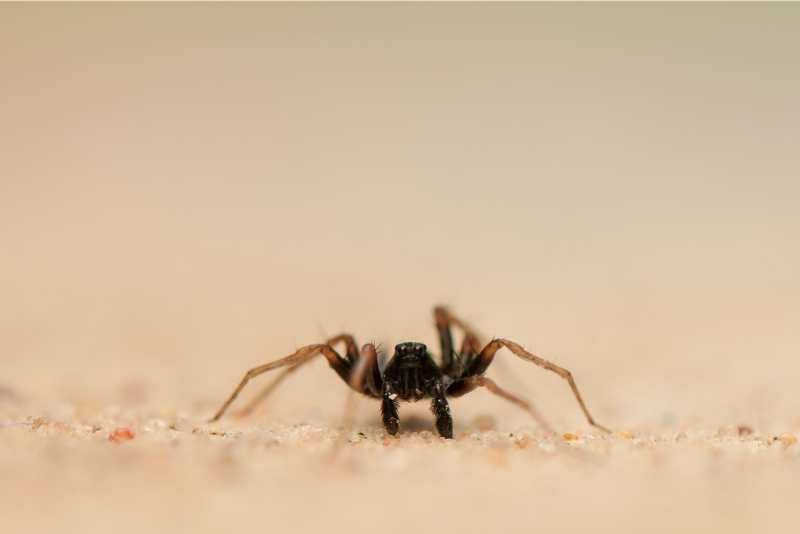
2. The Money Spider
Chances are, you’ve heard, of or come into contact with this species! “The money spider”. This species is quite common and is usually found in dark dry places, like sellers, garages, attics, and basements.
They are named “the money spider” because it’s believed that if you see one, you will have good luck and financial prosperity.
These spiders are very small and usually measure only a few millimeters in length. They are typically brown or gray in color, with a round abdomen and eight long, thin legs.
Money spiders are known for their ability to spin intricate webs, so if you want to find one look in high places like roofs, ceilings, etc.
Related Posts:
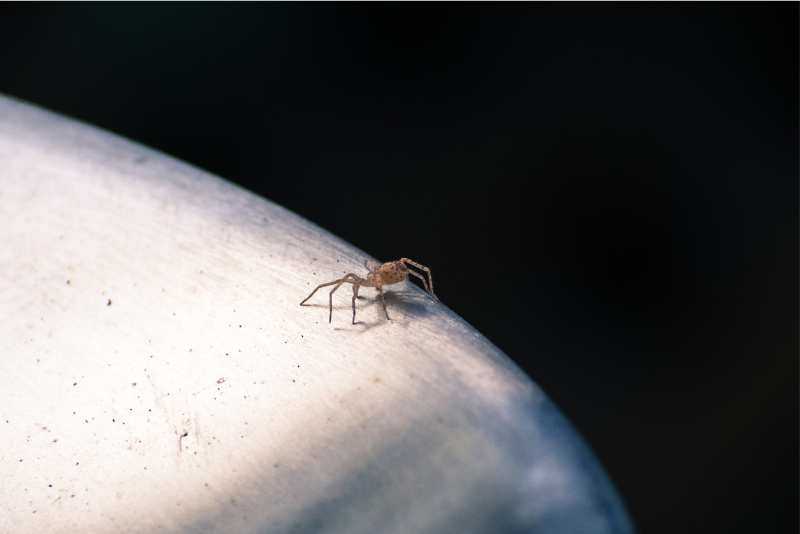
3. Ant Mimic Spiders
Ant mimic spiders also called “Ant-Mimicking Spiders“ are a type of spider that has evolved to look like ants. In fact, they look so alike; that they are often mistaken for ants.
Even their body length, which is approximately 10mm, is the same size as the ant species they mimic.
But, it doesn’t stop there! their body coloration also matches the particular ant species they are trying to mimic. They also have a false “waist” in their abdomens to create the appearance of a third body segment.
All these features help ants mimic spiders and get closer to their prey while at the same time avoiding being attacked by the ants.
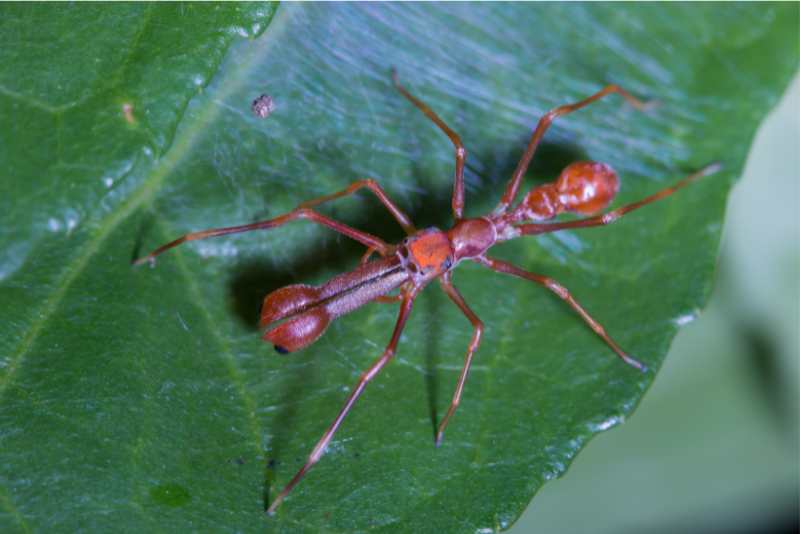
4. Bold Jumping Spider
Next on this list, is the bold jumping spider, also known as the Phidippus audax. This is another small “but” common species of jumping spider typically found in North America.
The average size of an adult bold jumping spider ranges from roughly 13-20 millimeters (0.51-0.79 inches) in length. They are black in color with a pattern of spots and stripes on their abdomen and legs.
Often these spots are orange-tinted in juveniles, turning white as the spider matures. Bold jumping spiders are easily identified by their large eyes and their iridescent chelicerae, which are the mouthparts used for biting and injecting venom.
Like all jumping spiders, they have excellent stereoscopic vision that aids them in stalking prey and facilitates visual communication with potential mates during courting.
Related Post:
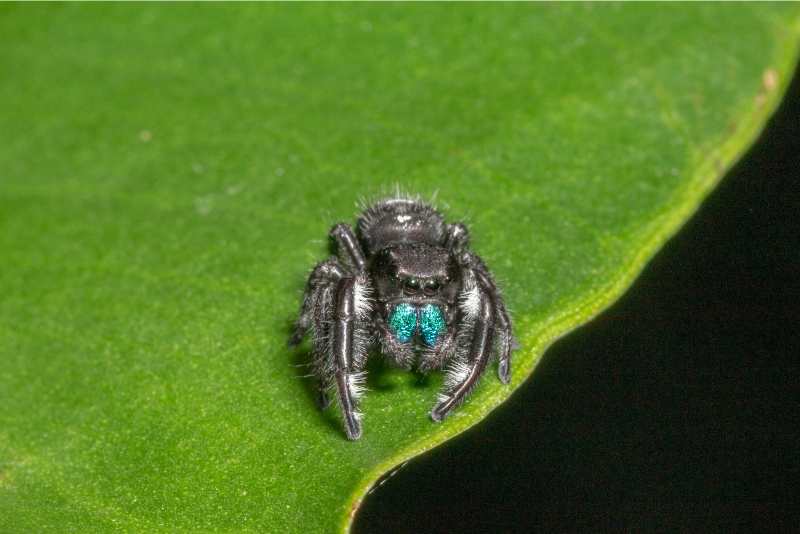
5. White Crap Spider
The white crab spider “Thomisus spectabilis”, is another small spider found in Australia and far east Asia.
The body length of the female white crab spider is typically 10mm, while the males are around 6.2mm. The appearance of the crab spider is usually white, though sometimes they may look yellow.
They have spindly legs, with the front four legs being longer than the back four legs. This feature is typical of crab spiders, resembling crabs getting their name “crab spider”
These species are often found in flowers, where they wait for their prey to come within striking distance.
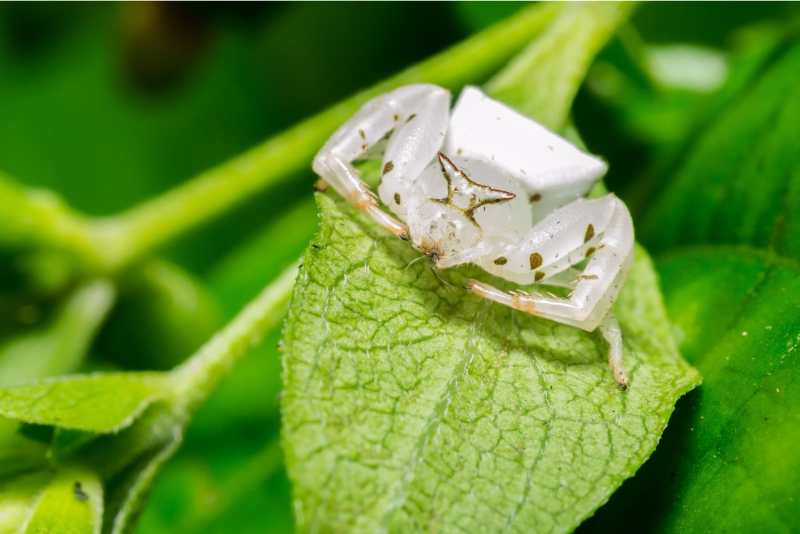
Related Post: 16 Blue Spiders With Photos!
6. Walnut Orb-Weavers
The walnut orb-weaver spider, also known as Nuctenea umbratica, is typically found in Europe, and Asia. Now this spider is slightly larger than those, mentioned above; however, they are still classed as a small spider.
The female walnut orb-weaver can grow up to 15mm in length, while the male grows up to 11mm. Both have a distinctive flattened body, which enables the species to hide in tight crevices.
The walnut coloration of the abdomen is what gives the species its common name. The darker central portion with zig-zag edges is also typical of the species.
When looking at the spider’s abdomen, your notice it has a dark, yellowish to yellow-greenish leaf-like fleckled marking, with small dents that are visible.
These are the onsets of the muscles that flatten the abdomen. The spider’s legs are banded or striped and are often covered in small hairs.
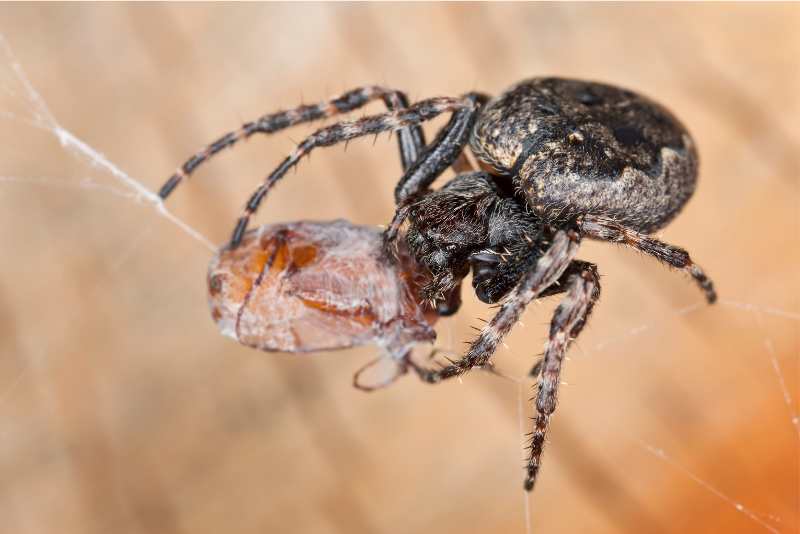
7. Garden Spider
The garden spider, also known as Araneus diadematus, is a common small species of spider found in gardens across Europe.
When it comes to their size, the female garden spider, typically grows to 30mm in length, while the males only grow around 20mm.
They have a distinctive rounded abdomen with a cross-shaped white or yellow pattern. Their skin is leathery and its color ranges from reddish-brown to yellowish-brown.
The garden spider has eight eyes arranged in two rows, with the front two being the largest. They are known for their ability to spin large, orb-shaped webs that can measure up to 40cm in diameter.
Related Post:
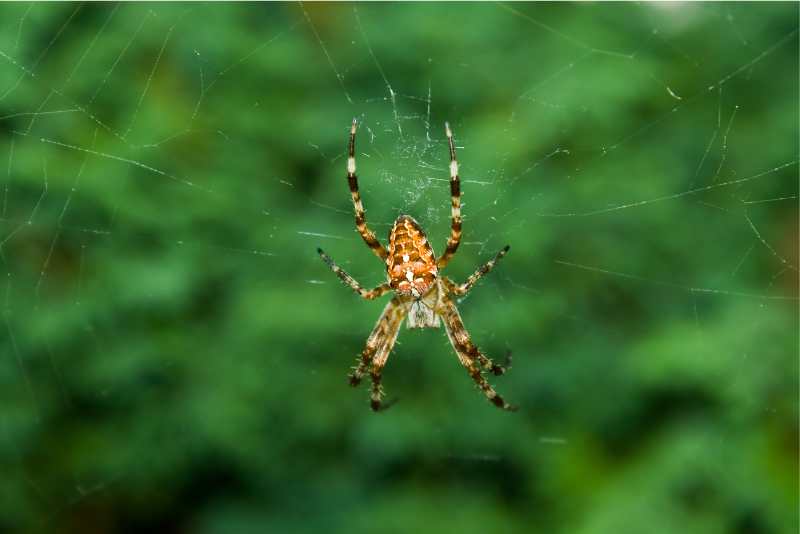
8. Woodlouse Spider
The woodlouse spider, known as “Dysdera crocata” is another type of small spider that can grow up to 13mm in length. They have a distinctive flattened body and a reddish-brown coloration, with a slightly shiny appearance.
The spider’s skin is leathery and its legs are long and spindly, with a reddish-brown coloration that matches the body.
The woodlouse spider has eight eyes arranged in two rows, with the front two being the largest. They are known for their ability to prey on woodlice, getting its name.
This spider is not harmful to humans and is considered a beneficial species because it can actually help control woodlouse populations.
This spider is typically found in wooded areas, under logs where it can easily find its preferred prey.
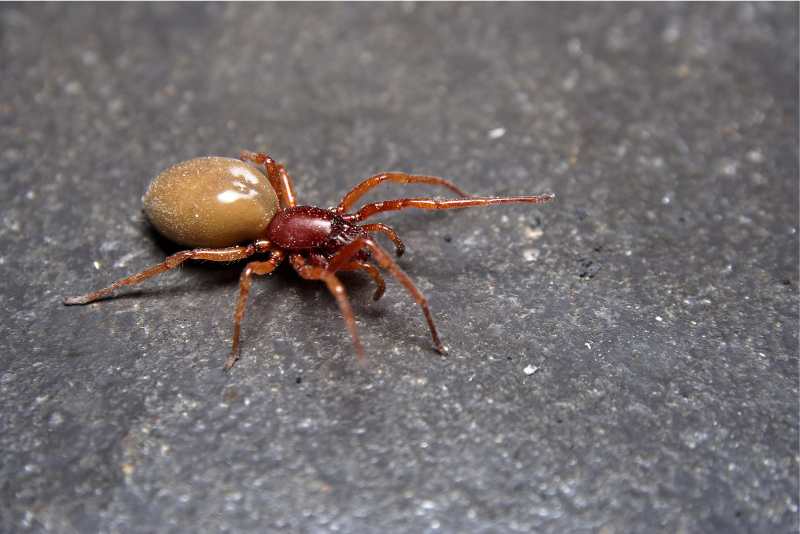
9. Green Huntsman Spiders
The Green Huntsman Spider, “Micrommata virescens“ is a species of spider that is commonly found in Australia. They are known for their bright green color and small size.
In the females are typically 12–16 millimeters (0.47–0.63 in), and in the males are about 7–10 millimeters (0.28–0.39 in)
The females are bright green, compared to their counterparts with a lighter green abdomen showing a darker green median stripe.
The males typically have a darker green olive and a narrower abdomen, compared to their females with red sides and a red to red-brown median stripe bordered by yellow.
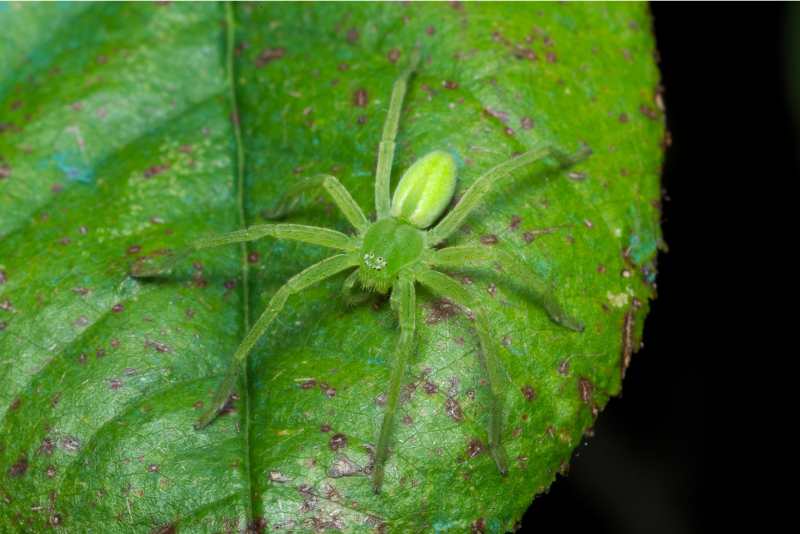
10. Green Leaf Web Spiders
Green Leaf Web Spiders, also known as Nigma walckenaeri, are small spiders that are commonly found in Europe and North America.
The green leaf spider is relatively small, with a body length of only 5-6mm and a leg span of up to 15mm.
They have a unique appearance, with a bright green abdomen and yellowish-green legs.
They also have two dark stripes on their cephalothorax that resemble a pair of sunglasses. These markings help to identify them from other spider species.
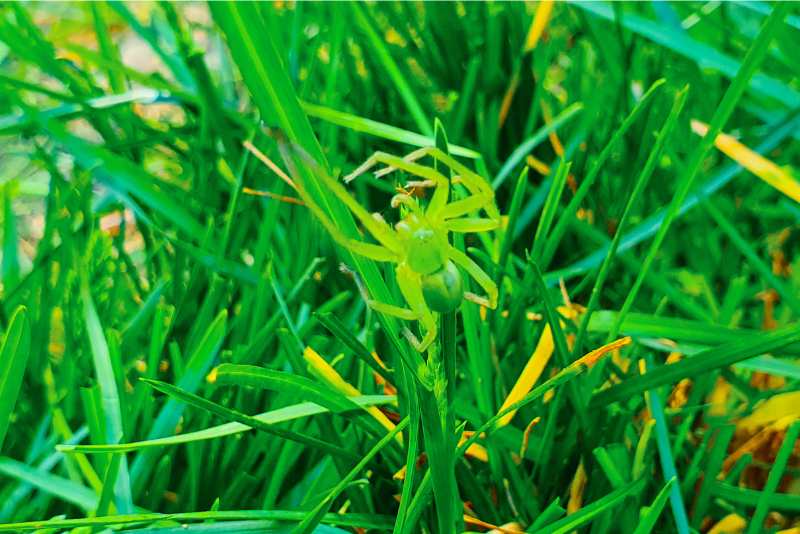
11 Sac Spiders
The sac spider is a type of spider that belongs to the family Clubionidae. They are commonly found in many parts of the world, including North America, Europe, and Asia.
Sac spiders are relatively small, with an average body length of around 5-10 mm. They have long, thin legs, and their body is usually pale or yellowish-brown in color.
One of the most distinctive features of sac spiders is their ability to create silk sacs or tubes in which they hide during the day. These silk sacs are often found in the corners of rooms, under furniture, or in other dark, secluded areas.
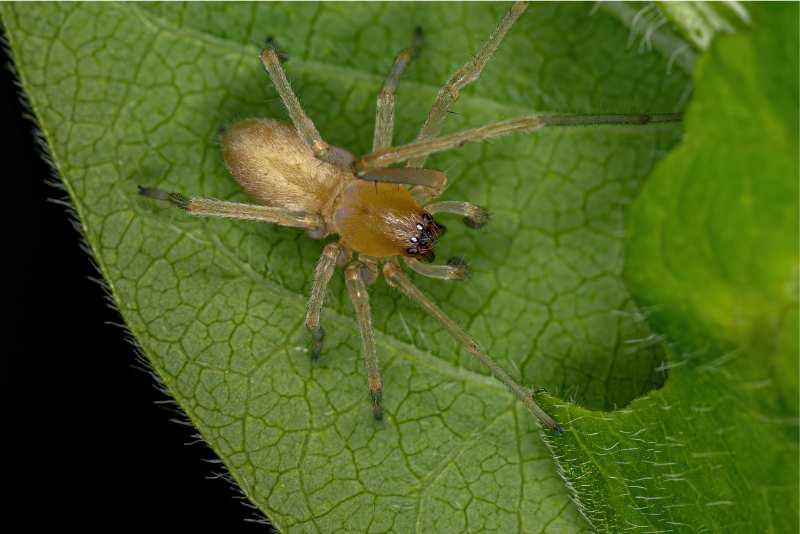
12. American House Spiders
The American House Spider, “Parasteatoda tepidariorum“ also known as the common house spider, is a species of spider that is found throughout North America. They are small in size, with an average body length of around 4-8 mm.
These spiders have a round, bulbous abdomen and long, thin legs. Their body is usually a pale yellow or tan color, with darker markings on the abdomen.
American House Spiders are commonly found in homes and other buildings, where they spin webs to catch their prey.
They are known for their ability to produce large amounts of silk, producing their webs. However, this can be a nuisance in homes, and other buildings as their webs can collect dust over time.
Related Post:
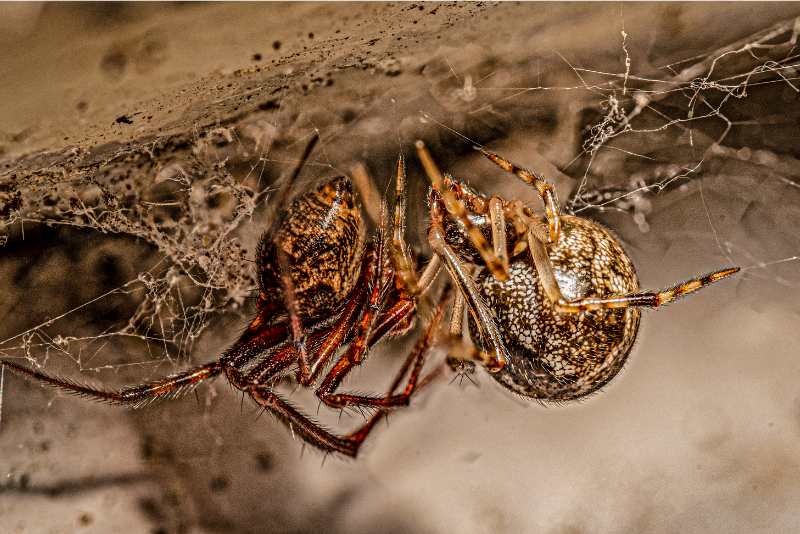
13. Australian Black Widow
The Australian black widow, also known as the redback spider, is a venomous species of spider that is found throughout Australia.
This spider has an average body length of around 10-15 mm for females and 3-4 mm for males.
These spiders have a distinctive appearance, with a shiny black body and a red or orange stripe on their abdomen.
The stripe is usually shaped like an hourglass, although it can vary in shape and color. The males are generally smaller and lighter in color than the females.
The Australian black widow is known for its venom, which is highly toxic and can cause serious illness or death in humans. Symptoms of a bite can include pain, swelling, sweating, nausea, and muscle spasms.
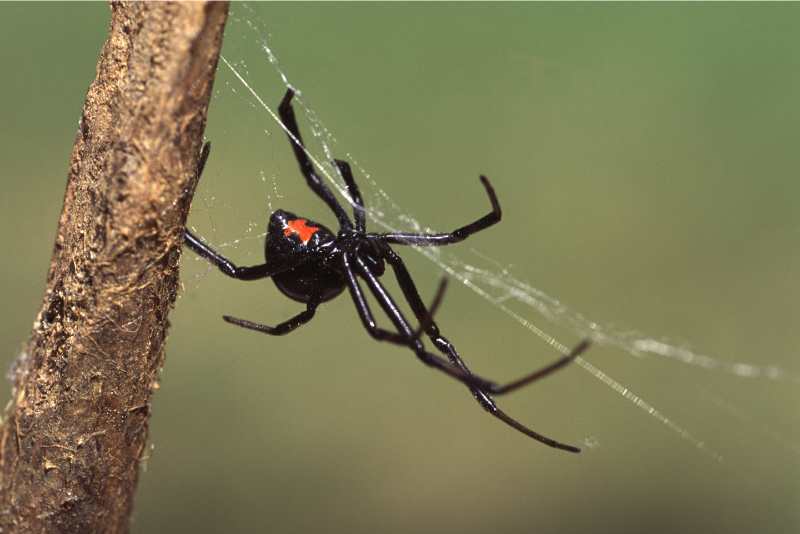
14. Green Cribellate Spider
Green Cribellate spiders, also known as Scytodes thoracica, are a species of spider that is commonly found in tropical and subtropical regions around the world.
The green cribellate spider is relatively small in size, typically around 5-10 mm in body length.
These spiders have a distinctive appearance, with a flattened, oval-shaped body and long, thin legs. They are usually a pale green or yellow color, with darker markings on their cephalothorax and abdomen.
One of the most unique features of Green Cribellate spiders is their ability to produce a type of silk known as cribellate silk.
This silk is different from the silk produced by most other spiders, as it is covered in tiny, barbed fibers that help to trap their prey.
Related Post:
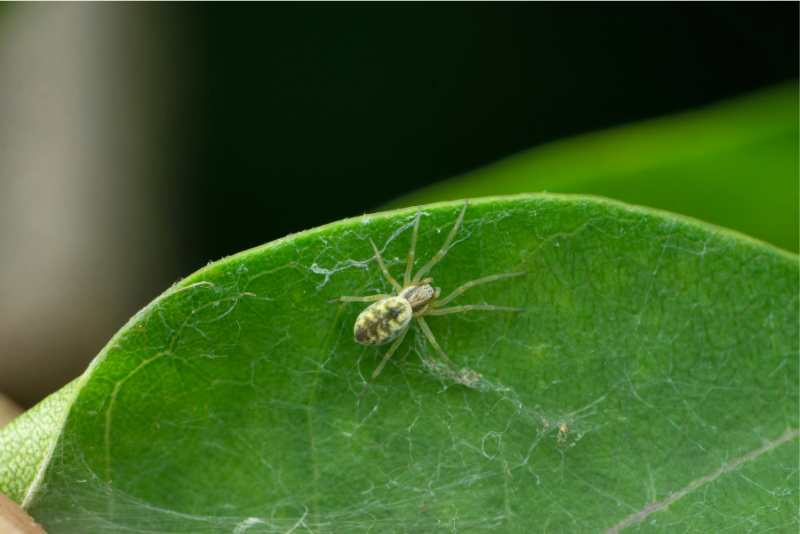
15. Barbed Mesh-Weaver
The Barbed Mesh-Weaver, also known as Amaurobius ferox, is a species of spider that is found throughout Europe and Asia.
They are relatively small in size, with an average body length of around 8-12 mm for females and 6-8 mm for males.
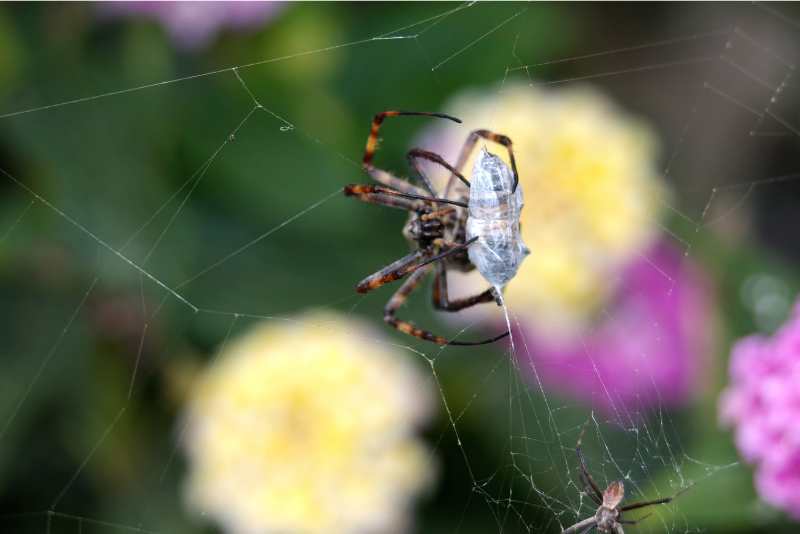
16. Pink Prowler
The Pink Prowler is a species of spider native to North America that is easily identifiable due to their brightly-colored pink body.
This species belongs to the wolf spider family and can grow up to 2 inches in diameter, making them one of the larger spiders found on the continent.
The Pink Prowler has two large eyes in front, two smaller eyes on top and four smaller eyes on either side. This allows them to have excellent vision and be able to rapidly track down potential prey or predators with ease.
These spiders are not aggressive towards humans but will bite if provoked due to the presence of venomous fangs which they use for self-defense.
17. Camel Spider
The Camel Spider, also known as a wind scorpion or sun spider, is a type of arachnid that is found in deserts and other dry regions around the world.
Despite its name, the Camel Spider is not actually a spider, but rather a member of the order Solifugae. They are relatively large, with an average body length of around 2 to 3 inches.
They have long, thin legs and a flattened body, which helps them to move quickly across the sand. Their body is usually a pale yellow or tan color, with darker markings on their cephalothorax and abdomen.
One of the most distinctive features of the Camel Spider is their, powerful jaws, which are used to capture and crush their prey.
They are known for their aggressive hunting behavior, and will often attack insects, small mammals, and even other spiders.
Despite their fearsome reputation, they are not dangerous to humans, although they may bite if they feel threatened or cornered.
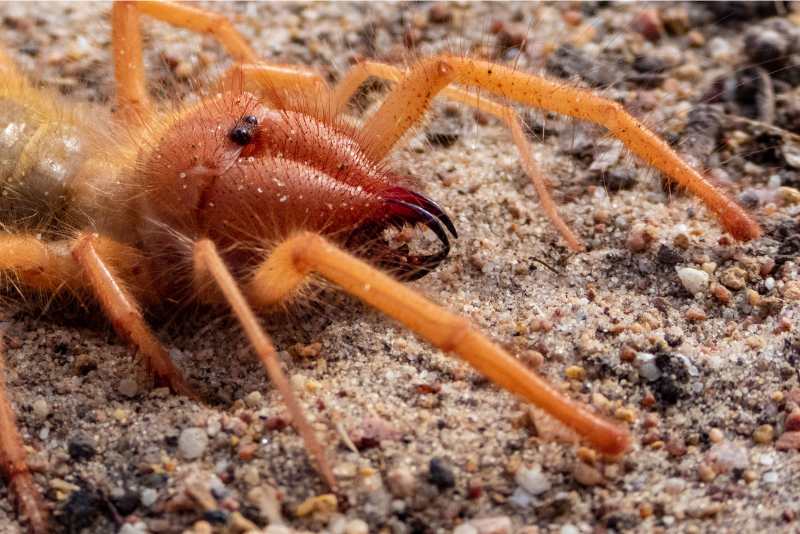
Conclusion
So there are 17 types of small spiders! and as you can see, each one is different in size, and appearance. However, most of these spiders are no larger than 2 to 3cm.
Related Post:



